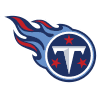This article is part of our NFL Draft series.
Wide Receiver
Deebo Samuel, South Carolina (5-foot-11 2/8, 214)
Selected No. 36 overall by the  San Francisco 49ers
San Francisco 49ers
A do-it-all player at South Carolina who was an elite kick returner in addition to being a major threat in the receiving game, Samuel brings a lot to the table for the 49ers. He returned from an injury-shortened 2017 to light it up as a senior in 2018, bringing in 62 of 101 targets for 882 yards and 11 scores. Samuel's vision and elusiveness in the return game translates to his work at receiver; he can make people miss in space and he's creative with the way he finds openings.
San Francisco is an interesting landing spot for Samuel, as he projects to play most of his snaps in the slot in the NFL. Last year's second-round pick, Dante Pettis, played about half his snaps (244 of 452) out of the slot, so something has to give here. If Pettis kicks outside more full time, it'll open up slot snaps for Samuel, who's at his best working the short and intermediate parts of the field. Samuel's skill set is versatile enough to where Kyle Shanahan can get creative with his role, but the South Carolina is likely the No.4 option at best in this offense for 2019.
A.J. Brown, Mississippi (6-foot 4/8, 226 pounds)
Selected No. 51 overall by the  Tennessee Titans
Tennessee Titans
Brown falling out of the top 50 was a surprise, and landing in Tennessee has not been received as much of a consolation prize by the fantasy community. The Titans ranked 31st in the NFL last season in passing play percentage (51.49 percent); even the Ravens went to the air on a higher percentage of their plays over the course of the 2018 season. So this will be quite the adjustment for Brown coming from a pass-first offense at Mississippi.
Still, Brown has the talent to make the most of his looks. Brown is a complete wideout who can work outside or in the slot. He's a sure-handed player who 73 percent of his passes over the last two seasons, a particularly impressive mark considering that's over a 218-target sample. At 6-foot, 226 pounds, Brown is like a big running back in the open field and smaller corners and safeties will have a hard time bringing him down.
Brown will likely work outside opposite Corey Davis in three-wide sets while Adam Humphries occupies the slot. He's capable there, but Brown is truly at his best working as a size mismatch out of the slot. The optimist would argue that the Titans spending a second-round pick on Brown would signal a philosophical shift towards emphasizing the passing game. The counter to that is that the Titans can technically be more pass-happy and still be near the bottom of the league in pass play percentage. This has the look of a low target volume year for Brown that likely moves him behind some of his fellow rookie wideouts in the rankings.
Mecole Hardman, WR, Georgia (5-foot-10 2/8, 187)
Selected No. 56 overall by the  Kansas City Chiefs
Kansas City Chiefs
Kansas City needed to move on from Tyreek Hill and find his replacement. Outside of Marquise Brown, there may not be a more dangerous vertical threat in this class than Hardman.
Hardman only started playing receiver full-time in 2017 after spending his freshman season at cornerback, so he's still developing the nuances of the position. Even as a "raw" player, Hardman is lethal down the field. He used his 4.33 speed to post a 10.1 YPT mark over his two seasons at receiver and he turned 11 of his 59 career receptions into touchdowns.
Kansas City will likely use him as a slot receiver with vertical tendencies, and landing in an Andy Reid offense means that Hardman will also get some gadget play usage. Hardman has one of the brightest outlooks among rookie receivers thanks to his skill set coupled with his fit within this Patrick Mahomes-led offense.
J.J. Arcega-Whiteside, WR, Stanford (6-foot-2, 225 pounds)
Selected No. 57 overall by the  Philadelphia Eagles
Philadelphia Eagles
You'll hear all the basketball cliches in the world when it comes to Arcega-Whiteside and his play style. The thing is, they all fit. Arcega-Whiteside really is a big-bodied receiver who boxes out defensive backs and comes down with the ball almost every single time.
The problem with his rookie outlook is that Philadelphia already has so many mouths to feed. Zach Ertz already eats up an inordinately high percentage of the targets and Alshon Jeffery has a skill set very similar to that of Arcega-Whiteside's. If Philadelphia moves on from Nelson Agholor it'll open things up for Arcega-Whiteside, but that might not happen until 2020. If Philadelphia goes into the year with Ertz, Jeffery, Agholor, Dallas Goedert, and DeSean Jackson, it'll be tough for Arcega-Whiteside to see even a 10 percent market share. So while the talent is there for Arcega-Whiteside to be extremely efficient with his targets, the lack of projected volume hurts his rookie outlook.
Parris Campbell, WR, Ohio State (5-foot-11 7/8, 205 pounds)
Selected No. 59 overall by the  Indianapolis Colts
Indianapolis Colts
This is a perfect match between player and team. Campbell, a speed demon with 4.31 speed who put up over 1,000 yards and 12 touchdowns for Dwayne Haskins in 2018, should get a chance to start right away out of the slot and provide explosive run-after-the-catch ability while T.Y. Hilton and Devin Funchess work the outside.
Campbell wasn't asked to work downfield much at Ohio State, but his top-tier athleticism suggests that he can develop those skills down the line.
Right now, Campbell is extremely dangerous in the short and intermediate levels of the passing game. He is sure-handed with a catch rate of 78.8 percent over his last two years at Ohio State, and that efficiency was achieved while he was posting 10.0 YPT. The blend of talent and fit here will make Campbell one of the more sought after rookie wideouts, and rightfully so.
Andy Isabella, WR, Massachusetts (5-foot-8 6/8, 188 pounds)
Selected No. 62 overall by the  Arizona Cardinals
Arizona Cardinals
Arizona took Isabella with the pick it acquired from Miami in the Josh Rosen trade. Isabella has some doubters for understandable reasons. He's undersized with small hands who usually faced middling competition during his time in college. Bet against Isabella at your own risk, though.
Isabella had three productive seasons at Massachusetts, capped off by a monster 2018 where he caught 102 passes for 1,698 yards and 13 scores. How was he against tough competition? How does 15 catches for 219 yards and two scores sound?
As for his NFL skill set, Isabella may have a slot frame but he has the speed and polish to function on the outside in Kliff Kingsbury's offense. Larry Fitzgerald and Christian Kirk will absorb a high percentage of the targets, but Isabella should be the downfield threat for the Cardinals who will have some matchup-changing weeks as a rookie. It just might not always be consistent.
D.K. Metcalf, WR, Mississippi (6-foot-3 3/8, 228 pounds)
Just gonna leave this one here......@PeteCarroll @dkmetcalf14 pic.twitter.com/TKMWJJ0IQK
— Seattle Seahawks (@Seahawks) April 27, 2019
Which one is which?
But seriously, falling out of the first round was a shocking development for a player like Metcalf, who had drawn comparisons to some all-time greats throughout the pre-draft process. However, concerns about agility, route-running, and durability all crept into the equation and knocked him down to Seattle in the second round.
Instead of focusing on what Metcalf can't do, let's look at what he can, because his talents are unique. Nobody in this class with his size can get vertical like Metcalf and he might be the biggest problem after the catch of any receiver in this class. Trying to turn Metcalf into a guy you send on slants and crossers out of the slot would be a waste. He's not that guy. Let Metcalf be Metcalf. Send him deep down the field or lob it to him in the end zone and watch the numbers pile up.
The question now is how he fits with Seattle. The Doug Baldwin retirement rumors mean that a fundamental change to this passing game is coming. Of course, Baldwin plays mostly out of the slot and Metcalf is a classic outside receiver. But the focus on where Russell Wilson looks for his targets is going to be very different if Baldwin isn't around, and there are only so many targets the Seahawks can add to Tyler Lockett's plate. Metcalf has the aforementioned limitations to his route tree, but a player with his raw talent and his projected snap count will be a fantasy contributor right away.
Diontae Johnson, WR, Toledo (5-foot-10 1/4, 183)
Selected No. 66 overall by the  Pittsburgh Steelers
Pittsburgh Steelers
Johnson may have been a surprise to some considering some of the bigger names still on the board here, but the Steelers deserve the benefit of the doubt with how they've evaluated receivers dating back to Hines Ward.
The Antonio Brown comps are ridiculous and unfair, though. Let's just stop those right now. What Johnson can do is get off the line with a lightning-quick first step and his natural ability to separate at the breaks in his routes is impressive.
James Washington and Donte Moncrief profile as Pittsburgh's boundary receivers for now so Johnson will likely start his career as the No.4 or No.5 wideout for the Steelers.
Jalen Hurd, WR, Baylor (6-foot-4 6/8, 226)
Selected No. 67 overall by the  San Francisco 49ers
San Francisco 49ers
Hurd took one of the more interesting paths to the NFL of any prospect in recent memory. He began his collegiate career at Tennessee as a running back under Butch Jones before transferring to Baylor and reinventing himself as a receiver. His transition paid off -- Hurd caught 69 of 110 targets for 946 yards in his lone season at Baylor, showing impressive route running ability and hands along the way.
San Francisco can afford to get creative with Hurd's role, as suggested below:
John Lynch said Jalen Hurd can be used outside, in the slot, could add more weight and be the 2nd TE and could line up in the backfield. #49ers
— Mike Clay (@MikeClayNFL) April 27, 2019
No matter how San Francisco opts to use him, Hurd is the type of player worth keeping tabs on in dynasty formats. He may be too raw to be a true Year 1 impact player, however.
Terry McLaurin, Ohio State (6-foot, 208 pounds)
Selected No. 76 overall by the  Washington Redskins
Washington Redskins
The Ohio State wideout gets to link up with his college quarterback in the nation's capital, and there's a very good chance that their connection starts to pay dividends in 2019.
Playing with Dwayne Haskins helped unlock McLaurin's potential as a senior. For comparison, he had 47 targets from J.T. Barrett as a junior in 2017, which he turned into 29 grabs for 436 yards and six touchdowns. In 2018 with Haskins, McLaurin converted 43 targets into 35 catches for 701 yards and 11 touchdowns.
As for his fit on Washington, things are looking good. McLaurin is the most athletic receiver on the team already with blazing speed and strong lower body explosiveness.
There also just isn't much in his way as far as getting on the field. Josh Doctson has proven to be unreliable at the very least and Paul Richardson has only played 16 games once in his five-year career. Look for McLaurin to lock down one of the outside spots in the Washington receiving corps by the end of September at the latest.
Miles Boykin, Notre Dame (6-foot-3 6/8, 220)
Selected No. 93 overall by the  Baltimore Ravens
Baltimore Ravens
Baltimore lost John Brown and Michael Crabtree this offseason, which made receiver a clear priority through the first two days of the draft for the Ravens. After nabbing the small and speedy Marquise Brown in the first round, Baltimore added a complementary skill set by taking Boykin in the third round.
Boykin has excellent size-adjusted athleticism and he showed some polish to his game as a redshirt junior in 2018. He can make it work on in-breaking and out-breaking routes and has a knack for using his massive frame to shield himself from defensive backs, making it tough for opposing DBs to win 50/50 balls.
Boykin's ability on those routes should be an asset for Lamar Jackson in the short-to-intermediate passing game as he'll have a big and reliable target in those situations. Baltimore won't have a high-volume passing offense, but Boykin's path to a starting role gives him some late-round flier appeal in deeper redraft formats.
Running Back
Miles Sanders, Penn State (5-foot-10 5/8, 211 pounds)
Selected 53rd overall by the  Philadelphia Eagles
Philadelphia Eagles
The Philadelphia backfield picture was already murky and this doesn't help matters. I have no doubts about Sanders' talent, but that offense's strength is its multiple nature that doesn't rely too heavily on any one player.
With that, Sanders will have to compete with the recently acquired Jordan Howard for carries on standard downs. You can read the tea leaves and see that Philadelphia has more invested in Sanders, who was taken in the second round compared to the sixth-rounder the Eagles traded to bring in Howard. But Howard and Sanders are similar players, and while Sanders may have more theoretical upside at this stage, he's not a perfect running back prospect.
Sanders is raw as a pass-catcher (22 catches for 132 yards in 2018), so it's difficult to project him for third-down snaps as it stands. And the fumble issues he had at Penn State could be disastrous for his rookie year playing time if they aren't resolved by the summer.
In all, Sanders is talent worth betting on in dynasty formats, but he has a muddy rookie year outlook having to compete with Howard, Corey Clemens, and Josh Adams for work.
Darrell Henderson, Memphis (5-foot-8 3/8, 208 pounds)
Selected No. 70 overall by the  Los Angeles Rams
Los Angeles Rams
Henderson is arguably the most talented back in this class, and the Rams' decision to spend a third-rounder on him when they already have Todd Gurley speaks volumes. Gurley can still be a workhorse if his knee holds up, but Henderson brings an explosive dynamic to the backfield.
Henderson averaged 8.9 yards per carry in back-to-back seasons, and it was no fluke. He held that mark across 344 rushing attempts in that span. Once Henderson gets some space, he's gone.
There is a ton to like with Henderson's game and how he projects for the next level regardless of your view on Gurley. Landing in an innovative offense that will likely scale back Gurley's workload when it can makes Henderson one of the most valuable rookie assets.
David Montgomery, Iowa State (5-foot-10 1/8, 222 pounds)
Selected 73rd overall by the  Chicago Bears
Chicago Bears
Chicago was an obvious candidate to add running back talent early in the draft after shipping Jordan Howard off to Philadelphia and only replacing him with...Mike Davis.
Montgomery isn't without his shortcomings; his combine testing was middling-to-poor depending on your point of view and the production at Iowa State was nothing special, either. However, it is important to note he was playing behind a shoddy offensive line during his time in Ames. Getting in behind Chicago's maulers will give Montgomery more daylight than he ever saw in college. The opportunity should be there for Montgomery to overtake Davis and absorb most of the carries left behind by Jordan Howard. It's just important to remember that Montgomery's closest athletic comparisons are players like Terrance West, Alex Collins, and Marcel Shipp.












